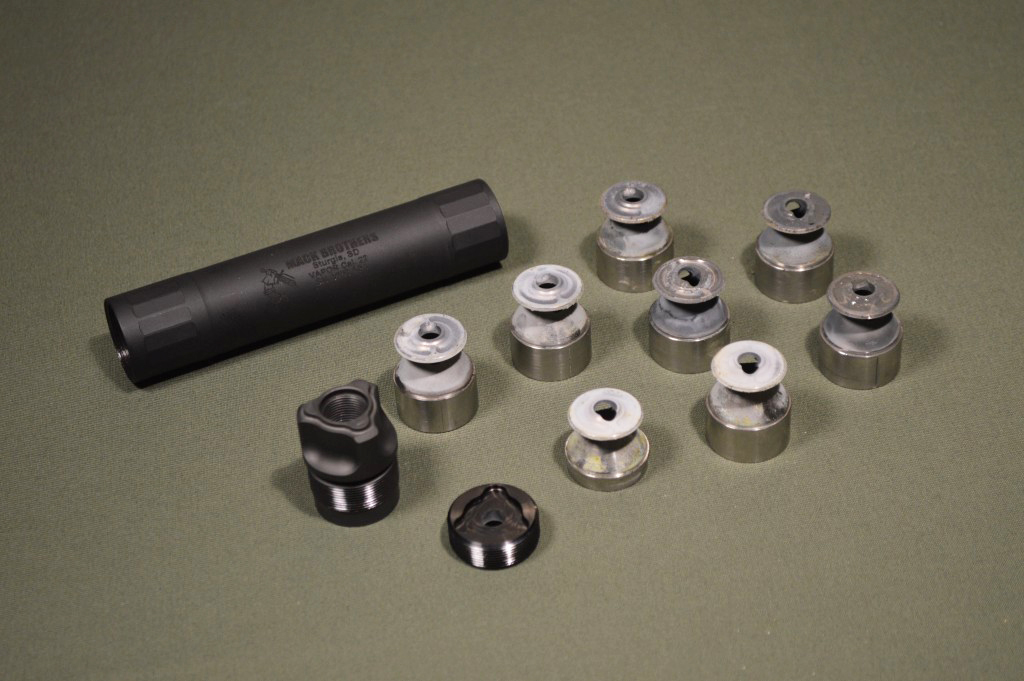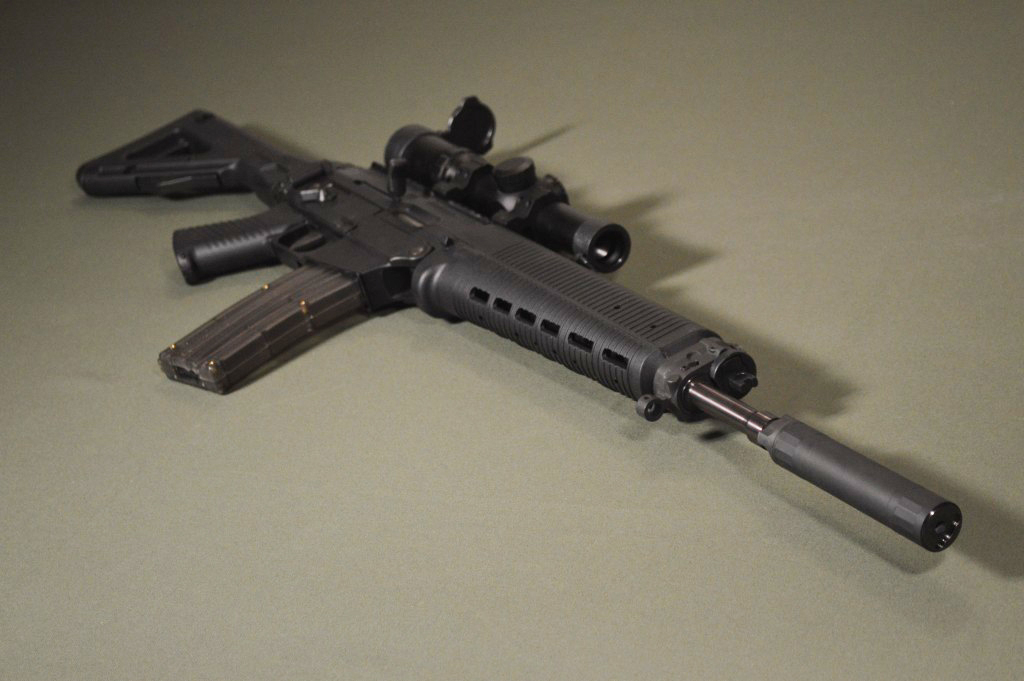Silencer Shop Authority: Mack Brothers Vapor Review
About a week after SHOT Show 2016, I got a call from Jeremy at Silencer Shop with news from the show and details on upcoming suppressors. In our lengthy discussion, we chatted about some of the products that Silencer Shop had lined up for 2016 and I was excited to hear that the suppression superstore expected to add several new manufacturers to their already robust lineup. Less than 60 days after the show, the first of these new silencers are beginning to roll in.
The first of these new offerings is a .22 caliber suppressor from Mack Brothers called the Vapor. Mack Brothers operates out of Sturgis, South Dakota and has actually been in the silencer game for almost 20 years, but this year the company appears set to take serious steps to compete with some of the industry’s giants. With silencers coming in several popular calibers, 2016 will surely be Mack Brothers’ biggest year yet. Enough with the background though, let’s check out the Vapor.
Size and Weight
In the wide world of rimfire suppressors, the Vapor falls smack dab in the middle as far as overall size is concerned. Mack Brothers’ flagship .22 can is exactly 5.5” long and like practically every other silencer in the category, features a 1” (1.03” if you want to get technical) tube. At this size, the Vapor works very well on both rifles and handguns and does not feel overly long on my PPK/S as a 6”+ suppressor might.
As far as weight is concerned, the Vapor once again falls in the light-middle range. Certainly, this silencer is no Gemtech GM-22 and it isn’t quite as light as the AAC Aviator 2, but it also isn’t as hefty as the Bowers USS 22. At 4.3 ounces, Mack Brothers’ offering is right where a suppressor of its size should be, and to be honest, it’s probably one of the lightest 5.7x28mm rated silencers out there.
Materials and Design
Unlike the vast majority of .22 suppressors, Mack Brothers’ Vapor is constructed entirely out of titanium. This material choice is largely why the can is relatively light, but it also contributes to its 5.7x28mm and fully auto .22 LR ratings. Since it is titanium, the suppressor’s baffles should handle harsh cleaning agents like the dip and ultrasonic cleaners without issue. Quality manufacturing and materials like those used in the Vapor don’t come cheaply ($525 MSRP), but if you want the best of all worlds in a .22 silencer, this is a great way to get it.
Inside the tube, you’ll find a stack of eight K-baffles. The specific type of “K” used by Mack Brothers functions similarly to the design popularized by Gemtech’s old Alpine, but the approach is different. Whereas the Alpine baffles shielded the outer tube of the can with skirts that extended in front of each blast face, the skirts on the Vapor baffles fall behind each cone. Either way, both approaches work extremely well to prevent lead buildup on the suppressor tube and disassembly remains simple, even after hundreds of rounds.
The real strength of K-baffles is that they suppress low pressure rounds very effectively. Not only do the flat/ported blast faces help to direct gas into each expansion chamber, they also prevent gassy backflow. This is why K-baffled cans often perform exceptionally well when metered at the shooter’s ear.
Range Report
At the range, the Vapor performed excellently. Its tone is bested only by some of the monocore designs I have tried. On the whole, I think it is safe to say that the Vapor is one of the three best .22 LR performers I’ve tested to date. As of writing, testing numbers for the silencer have not been released, but my best guess is that the Vapor probably hovers in the 114 to 115 dB realm on a .22 LR rifle and possibly meters at around 116 or 117 dB on a pistol. Thanks to its K-baffles, the suppressor also generates minimal backpressure, which in turn means that it sounds great at the shooter’s ears. At no point during my session with the Vapor did I feel like I needed additional hearing protection.
You’ll probably note from the video that the Aguila standard velocity ammunition continues to be a problem for me. In the SIG 522, it frequently goes supersonic and my PPK/S struggles to reliably cycle the pills. Since the Vapor adds little in the way of backpressure, it cannot give the PPK’s slide a boost like some gassier cans might. This is actually a good thing from a suppression standpoint. The primary issue is that the Aguila ammunition has been a real let down.
To round out my range testing, I mounted the Vapor to my SIG 522 and examined how the silencer affected the rifle’s point of impact (POI). Shooting at 50 yards, the Vapor moved my groups 3 MOA (1.5”) left as compared to shooting with a bare muzzle. Interestingly, this is approximately the same amount of POI shift that a basic A1-style flash hider adds to the same SIG 522.
Conclusion
There really isn’t any denying that that Vapor from Mack Brothers is a phenomenal suppressor. Its proven K-baffle design and easy disassembly make it very appealing to high-volume .22 LR shooters. Meanwhile, the all-titanium build is more than suitable for hot rounds like 5.7x28mm. Truly, few other options come with the same blend of lightweight, durability, and performance offered by the Vapor. Though these features come with a price, the Mack Brothers’ new can should fall right in line with other high-end .22 suppressors.
Jeremy Mallette is co-founder of International Sportsman. An avid hunter and outdoorsman, he has spent more than a decade in the outdoor industry, from hiking and camping to silencers and hunting. His father taught him to shoot at age six, and he received his first firearm at age eight — a 1942 Colt Commando .38 special revolver. He enjoys yearly trips to Kansas for pheasant hunting, spending time with his children at the deer lease, and collecting unique firearms.
An information security professional by day and gun blogger by night, Nathan started his firearms journey at 16 years old as a collector of C&R rifles. These days, you’re likely to find him shooting something a bit more modern – and usually equipped with a suppressor – but his passion for firearms with military heritage has never waned. Over the last five years, Nathan has written about a variety of firearms topics, including Second Amendment politics and gun and gear reviews. When he isn’t shooting or writing, Nathan nerds out over computers, 3D printing, and Star Wars.










